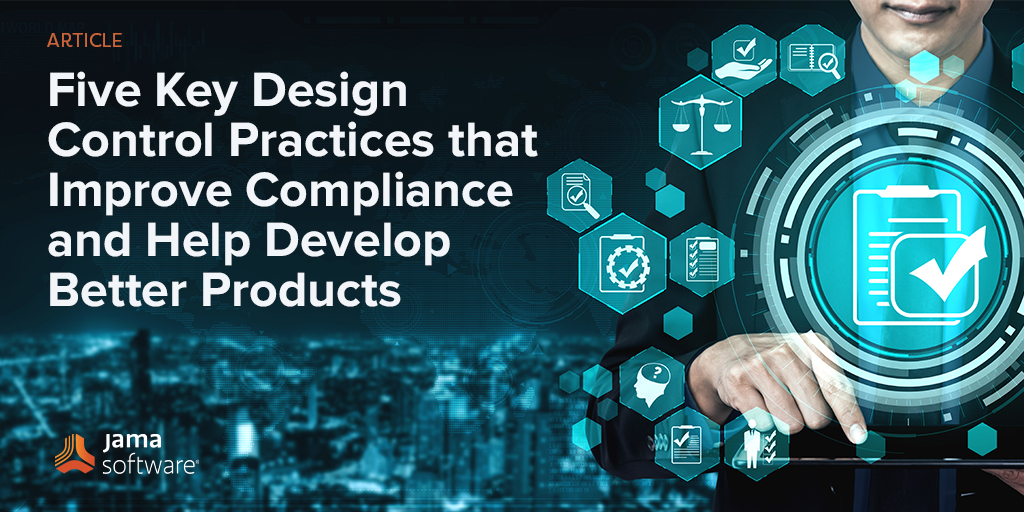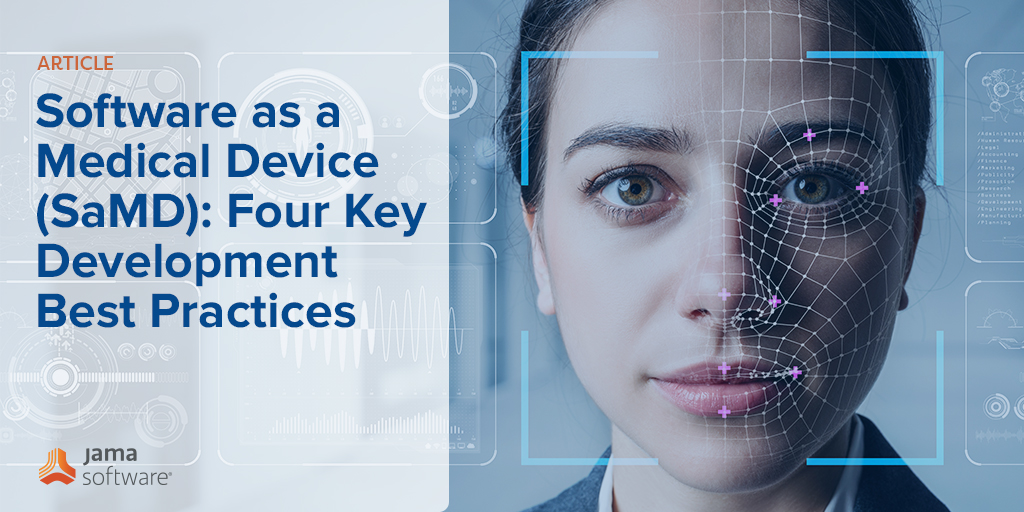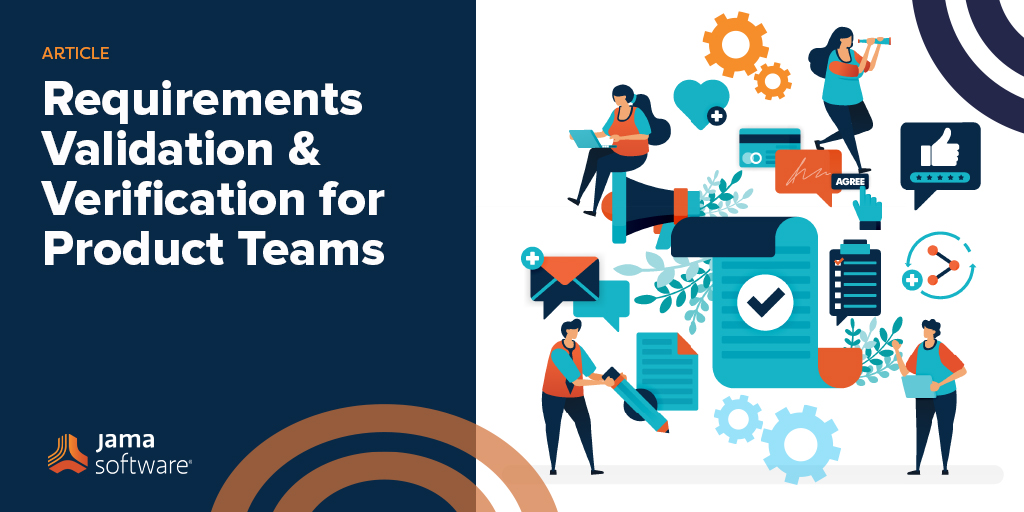In this post, we recap a recent webinar hosted by Jama Software on the topic of requirements management in the medical device industry
Requirements management solutions enable the unification of siloed processes and data that often reside in outdated, disparate, and disconnected legacy systems. However ineffective and inefficient, the industry still relies overwhelmingly on static documents housed in Excel/Word and relies on manual processes that add significant risk to the development process.
Axendia conducted a research study focusing on the medical device industry’s approach to requirements management with a goal to identify and analyze the drivers, barriers, trends, and value of requirements management across the product development lifecycle.
9 out of 10 (87%) Executives surveyed for this report admitted to having a ‘not effective or somewhat effective’ requirements management process.
In a recent webinar, Axendia’s Senior Industry Analyst, Sandra K. Rodriguez and Jama Software’s medical and life science principal solutions lead, Steven Meadows, shared the outcomes of the research including:
- The impact of having an ineffective requirements management process
- The critical importance of requirements management to achieve improved patient outcomes, product quality, and time to market
- The negative impact on budgets, verification and validation activities when relying on manual processes
Watch the full webinar to learn more about The Costly Impact of Ineffective Requirements Management in the Medical Device Industry.
Excerpt from webinar:
Requirements Management in the Medical Device Industry
Sandra Rodriguez: Thank you for that introduction, Marie, and good morning, good afternoon, or good evening, depending on where you’re joining us from today. Really quickly about Axendia, we were founded in 2005. Our headquarters are in Philadelphia, Pennsylvania. I’m physically located in San Juan Puerto, Rico, it’s a balmy 84 degrees today. What’s unique about Axendia is that our analysts all have industry experience. And combined, we average about 25 years of experience. We work with startup companies as well as fortune 500 global clients. And we really focus on the intersection of the business regulatory and technology trends that impact the industry. So really looking forward to sharing the outcomes of our latest market research on the state of requirements management in the medical device industry.
Just really quickly too, for the folks of you on the webinar today, congratulations, you will be the first to receive a copy of the research report. I’m not going to cover the report in its entirety today because we don’t want to take away the thunder of it, but we do hope that you will find today’s information valuable and timely and that you get some great takeaways from the report. Before I go into that, though, just a quick acknowledgment that the content of today has been sourced from our quantitative and qualitative research, as well as our interaction with FDA’s officials and industry executives, and then some firsthand experiences from our clients as well.
All right, so let’s start with the demographics. We surveyed a multitude of companies from around the world, companies that perhaps make more than one type of medical device product, but here you can see that the majority do market and sell single-use disposable consumable devices followed by diagnostic devices that have both hardware and software components and software as a medical device.
So those were the top three. As a result of that, we wanted to look at the data in a little bit more kind of slice it and dice it. So we specifically picked out software as a medical device, and you’ll see in the report, and as well as in the presentation today, how the opinions vary based on the type of medical device company that we surveyed for this report.
In addition, we got a good mix of small companies and large companies. The majority of the companies that did respond to the survey were under 50 million. So they could be startups, they could be a little bit pre-market followed by the $1 billion to $5 billion size companies when it comes to their revenue. So another thing that we did was we went ahead and compared these survey responses based on those two different size companies. We also got a significant number of R&D and product development personnel to take the survey, which is important.
These are what I call the boots on the ground, the companies that really understand requirements management inside and out. They’re the ones who are working on the new products as well as quality assurance personnel. And then we had a 17% representation of executive management. So another thing that you’ll see in the report is that we went back to the data and did do some comparison and filtering based on these three personas. And we were really surprised to see how the attitude shifted.
RELATED READING: 2022 Predictions for Medical Device Development
Sandra Rodriguez: From a geographic standpoint, we had a really good representation. Overall, the majority of survey respondents do work for companies that sell in market products in North America, so Canada, the United States, and Mexico followed by Europe and all the EU member states. And then, of course, Asia, South America, Africa, and Australia. So again, a really great representation of the medical device industry.
So this was our first question. And following the demographics, I think it’s really important to point out that this was the first question that it came when it came to requirements management processes. We wanted to understand from the market standpoint if people felt that their organization’s requirement management process was either effective or I’m sorry, not effective, somewhat effective, very effective or ideal. We were really surprised that when you combine not effective and somewhat effective, straight out the gate, we have a 68% of the market saying that there is a lot of room for improvement here. This is what I call aiming for average. And it’s definitely time for this to change because the complexity of the devices is changing. The regulatory landscape is changing. We have a lot more software as a medical device coming out there into the marketplace. And there’s a lot of hardware and software components that are going into these products, whether you’re doing remote monitoring of the products once they’re out in the field or in the patient.
So because of the complexity alone, you really need to have… You would want to see the very effective and ideal numbers go up because when we combine them, we’re only at 31%. And what’s really shocking is that only 2% of those companies that we surveyed for this research project believe that they have an ideal process. So we wanted to take a look at those numbers from the different personas. The quality personnel were of a little bit more positive. They believe that their requirements management process is very effective or ideal. So they account for about 53% of that. But when you look at the executive management, to have 87%, so almost 9 out of 10 executives indicating that their organization’s requirement process is not effective or only somewhat effective, that’s pretty shocking. Keep in mind that these are the folks that own the budgets.
So if you know that there’s a problem, we really need to do something to incentivize these folks to make the necessary change and get to that very effective or ideal state, even on the R&D and product development side, the same holds true with 68% of those professionals saying that their organization’s process is somewhat effective or not effective.
So we also asked the closed-loop system question. And we define a closed-loop system as one in which the desired output depends on the input signal and the feedback elements that are going to enable end-to-end traceability. So when you’re looking at a typical product development cycle, you have the finished product here in the middle. So you’re going from concept to prototype. Clinical, if you need to have a clinical trial for the type of medical device that you’re looking to bring to the market, going into manufacturing, marketing, commercial, and then obsolescence.
RELATED READING: Axendia Report: The Costly Impact of Ineffective Requirements Management
Sandra Rodriguez: So having that continuous feedback loop, really closing loop around that system, and having the necessary traceability that’s going to be required from a quality and from a regulatory standpoint. So we ask them, how effective is your organization at closing the loop across the product development cycle. Now, mind you, this was question number two. And we see here that 68% of the market, again, admitted that that process is not effective or only somewhat effective.
So again, really need to make the necessary changes there, and probably invest in the solutions so that you can close the gap and get that traceability and close the loop across the product life cycle. It’s interesting as an analyst because we don’t sell or implement software, but we stay really close to the market. And we follow these trends and we see significant investment in the life sciences when it comes to digital transformation or investing in business systems.
But it’s important to point out that without a product you wouldn’t be in business. So the solutions and the systems, the tools that you have in place when it comes to your product should be as important as the systems and tools that you give your salespeople, or your ERP, or however, you’re investing in those systems. You really need to make the necessary investments in order to make sure that your product is of the highest quality and that you can get to market sooner and on time and on budget because we’re going to learn in this presentation that the industry is really struggling with that.
Watch the full webinar to learn more about The Costly Impact of Ineffective Requirements Management in the Medical Device Industry.
READ MORE




